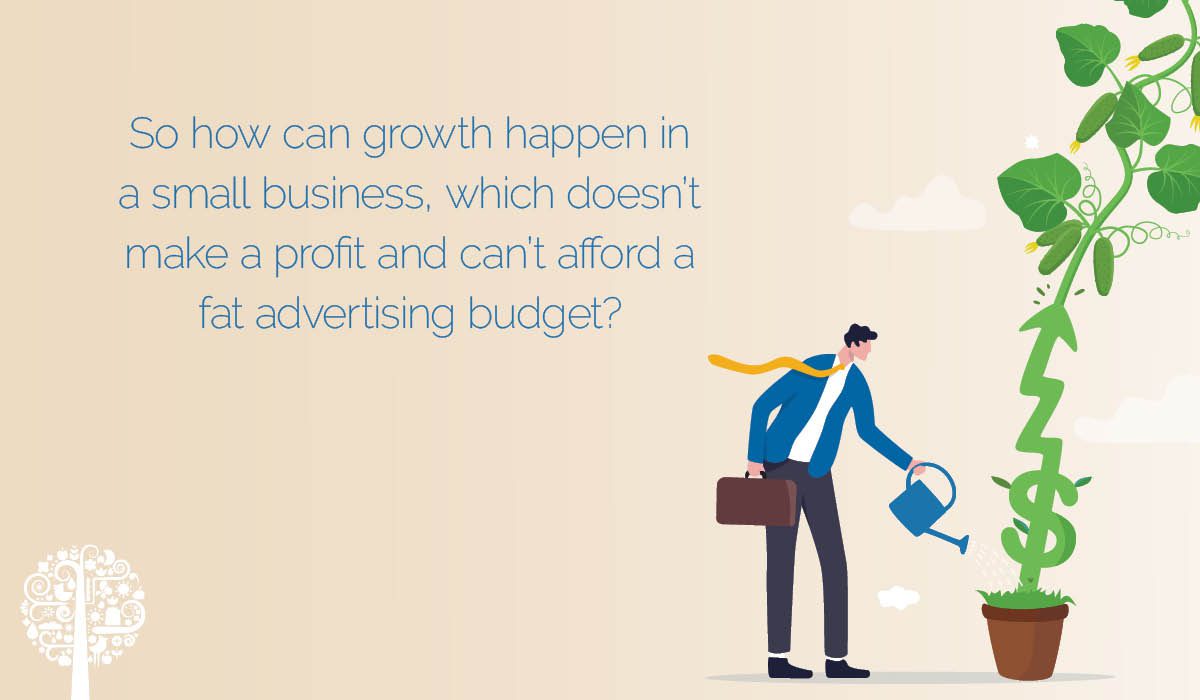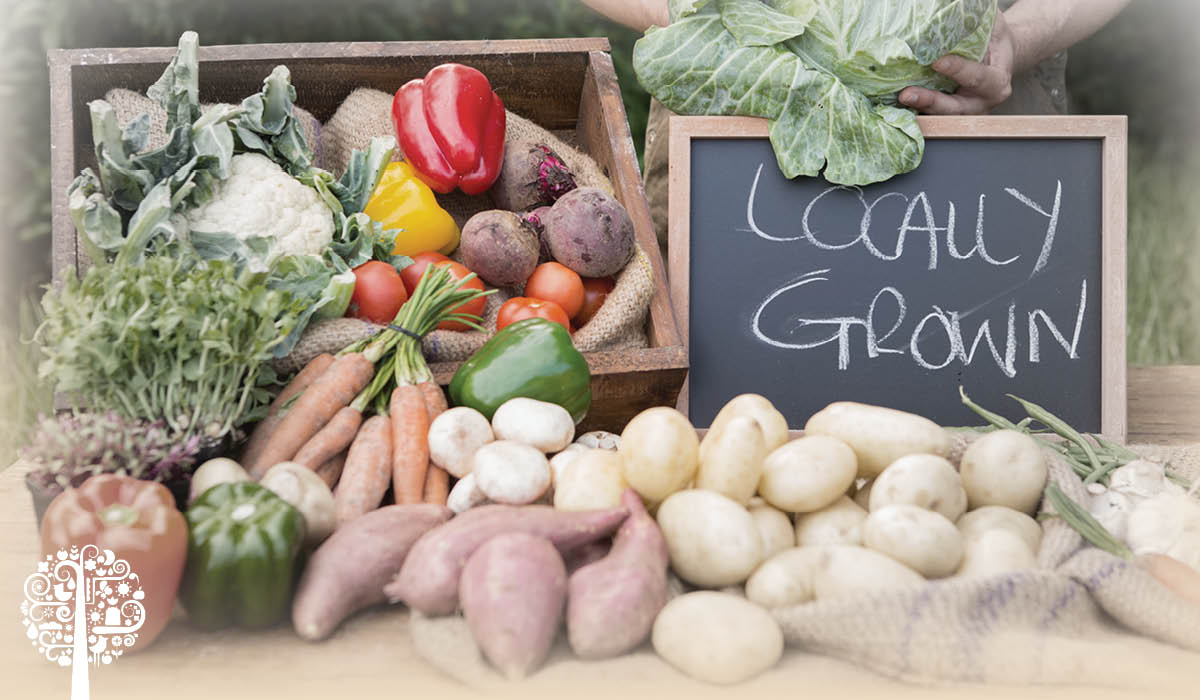Every business wants to make a profit; that’s how companies progress, and that’s how growth happens. So how can we rethink profit to be more fulfilled?
I was talking to a friend at a small local cooperative producers’ market about this recently. We were observing the crowd, seeing the friendly chatter and banter that was going on. I told him it was my job to help expand this small business to hopefully reach more people and increase online sales, as it also has a website and weekly delivery slots. We talked about how the main difference between small local businesses and big supermarkets is that supermarkets create a buzz through advertising. Through building their brand, they gain peoples’ trust. With convenience thrown in, that trust is the perfect formula – they have the money to buy peoples’ confidence, in a way. That’s a very powerful thing.

So how can growth happen in a small business, which doesn’t make a profit and can’t afford a fat advertising budget?
The cooperative I’m freelancing for is currently volunteer-run, and as one of the long-standing volunteers, Keith, recently told me, “you don’t get people volunteering at their local Tesco.” So what’s the difference? And what drives people to pay perhaps double the supermarket price for a cucumber from a local producer? Profit.
Points of Profit in Local Food
- Produce. A small producer grows the cucumber hoping that someone will buy it, or with a bit of luck, they will have secured their market beforehand. This is the first point of profit – the relationship between the grower and the produce. The value is in the learning, experience, and time before the cuc is even sold.
- Market. The producer finds a market. This could be by attending an actual in-person market, selling produce from the farm gate, veggie boxes, or retailers. The relationship involved and the willingness to continue the chain is inherently valuable. This requires trust, relationship building, and community connection.
- Consumer. The grower of the cucumber has a hand-to-hand transaction with the consumer through a market or the retailer they have sold it to, who then sells it on giving full credit to the grower for growing it. Profit. The consumer feels good because they have bought the cucumber, and they know where it’s from, and the retailer feels good because they have bought it locally and have supported the producer. Profit.
Wider Benefits – Head-Based vs Heart-Based Consuming
When looking at local food, we always have to take these benefits into account; it’s the difference between the pull of the supermarket and the pull of locally produced food. Shopping becomes less of a transaction, moving from head-based, logical thinking to heart-based feeling.
Head-based is about money and bargains (bargains because the supermarket says they are), often feeding addiction and comfort eating. The transaction is about quantity and a feeling of satisfaction through having achieved a bargain. The supermarket gets the money and the profit, and the consumer gets the satisfaction.
Heart-based is about perceived value. The consumer has entered into a relationship with the retailer or producer – it’s personal. There’s the feeling of responsibility, support, and relationship with people and places. Everyone wins. Relationships are built, and a deeper understanding of the producer, their land, and challenges happens. The consumer may buy less, but the feeling is far more satisfying than buying from the supermarket. The profit is spread between the producer/retailer and the consumer.
I hear from many small producers about how tough it is and how they make no money from it. When money becomes the main focus, the main way to feel a sense of achievement in the work, then all the other benefits, in turn, feel much smaller.
Why People Don’t Buy Local
One word: fear. When I worked setting up an organic food wholesaler in Manchester ten years ago, it was a hard sell. The market was catering and selling local, organic food to chefs and restaurants. Part of my job was to convince time and budget-constrained (and often very fickle) chefs to buy a more expensive, less convenient product. Our main selling point was that it was locally grown, that the chefs could get to know the growers and have produce grown to order. We ended up supplying everyone from university catering to fine dining restaurants. Some loved it, and to others, it made no sense. The ones that loved it bought into the relationship side – that was the most crucial part – and then they looked at the price. We were closer, more open with each other, and there was trust involved. Those who were entirely budget-focused rarely bought the food and were therefore never open to the deeper benefits.

All too often, people are only voting with their wallets, seeing that their economic survival is the bottom line. When money calls the shots, we get supermarkets; packaged, heavily branded, poor quality, processed, ‘safe’ food. People are scared to step away from this way of consuming because, to them, it feels safe. People also do not want to feel responsible for another’s livelihood – that’s scary. The supermarket takes that fear away, couches us in brands and bargains and takes all the ‘messy’ relationship and responsibility away.
The Bigger Picture
When we look at the bigger picture, we, as consumers, are removed from the compassionate side of consuming through the disempowerment practiced by supermarkets. We no longer see what produce is available, seasonality and the occasional, natural inconsistency of locally produced food. Inconsistency has now become intolerable for consumers. But what seasonality and inconsistency do is connect us to the producer, the challenges of food production, and finally, to the vulnerable nature of food production and security. We don’t want to see that we are vulnerable. We don’t want to care what affects producers.
When we are disconnected from the profit of local food, we forgo relationships and a deeper understanding of natural cycles. We need to help people see that when they buy local, they are tapping into something much deeper than a financial transaction – it’s a cultural connection, a relationship between people, food, nature and community – all of which take time and effort and a willingness to be open.
Suppose we can begin to look at profit as a social capital rather than always financial. We will start to see that what we’re working towards is a deepening connection, both grounding and satisfying, aligning us with healthy buying and consumption practices and a deeper foundation in community and relationships. Everyone profits that way.